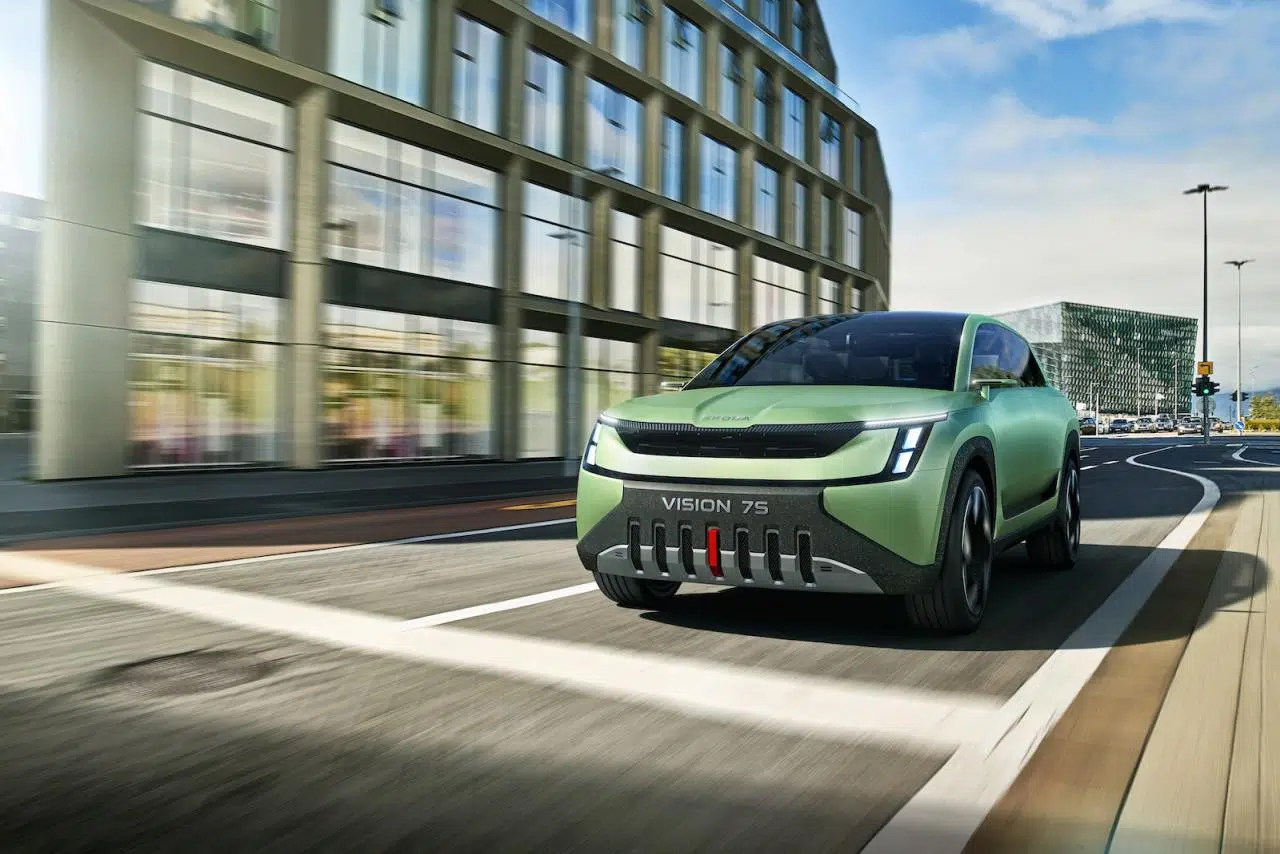ŠKODA: new brand identity and new top model Vision 7S
Under its new CEO Klaus Zellmer, Skoda wants to set off for new electric shores.
Three new models by 2026, 700 million euros for digitalisation and a further 5.6 billion euros invested in electromobility are intended to show that the Czechs are serious about making the leap to the top. To kick things off, there is a new top model.
The study of the Skoda Vision 7S is intended to give a near-production preview of a new top model of the brand from Mlada Boleslav - an electric SUV with plenty of space for seven people that have outgrown the middle class long ago. The production model of the approximately five-metre-long Vision 7S is one of three completely newly developed vehicles that Skoda plans to bring to market by the end of 2026 - electrically.
"With the Vision 7S concept study, we are giving a concrete preview of a completely new Skoda model with which we will round off our product portfolio and our customer base upwards," says Skoda CEO Klaus Zellmer, "we are thus positioning ourselves even more strongly for the decade of transformation and will invest a total of €5.6 billion in e-mobility and a further €700 million in digitalisation and thus in the future viability of the company and jobs over the next five years."
The electric study of the Vision 7S not only shows the new Skoda logo in the form of the lettering and a new brand face but also pleasing proportions, a self-confident appearance and space for seven people. This also takes the van off the table, which had been repeatedly demanded from the Volkswagen subsidiary. Like the brand's other electric models, the Vision 7S is based on the modular electric kit and, with its 89-kWh battery pack, is supposed to enable ranges of up to 600 kilometres before it has to be plugged in again. Unlike the current plug-in models, the crossover, which is available with either rear-wheel or all-wheel drive, can be recharged at a fast-charging station with up to 200 kW. The power range should largely correspond to that of the current models on the electric modular system, which means that the engine output should range between 150 kW / 204 hp and 265 kW / 360 hp.
The interior of the electric study is very purist. It can be assumed that the production model will hardly be any different. The materials used are leather-free and come largely from sustainable sources. The floor of the concept study in the speckled look, for example, was made from recycled old tyres and the fabrics used are made from recycled polyester yarns. The vehicle functions are operated via voice, a few direct selection buttons or a 14.6-inch touchscreen in the centre of the dashboard, which can be rotated.
Behind a two-spoke steering wheel, the driver looks at animated 8.8-inch instruments and a large head-up display. For breaks, a relaxed mode can be activated inside the electric crossover at the touch of a button, where the steering wheel and instrument panel slide forward to give occupants more freedom of movement. The swivelling front seats tilt back at the touch of a button, as do the second-row seats, increasing relaxation at the next charging stop.
